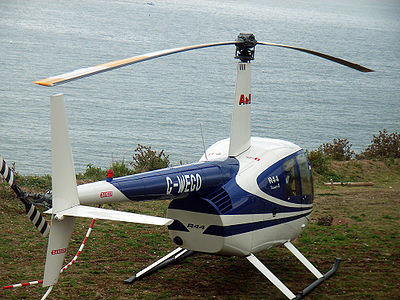
We can all find it stressful to move to a new home and pets are no exception. Cats in particular don’t like change. But there are things you can do to make the move less stressful.
When choosing a new home, take your pet into consideration. Too many people find themselves unable to care for their pet after a move, because they didn’t think about their pet’s needs before they moved.
If at all possible, it’s a good idea to let your pet visit the new home. You can take your cat or dog to the new home and making sure all exits are secure, allow your pet to sniff around and become accustomed to new smells. Bring some of your pet’s belongings like toys, a favorite pillow or blanket and treats. Include an article or two of your clothing that has your smell on it. This will help your pet to acclimate to the new surroundings.
Take your dog for a walk around your yard and the new neighborhood. Allow him/her to sniff the new areas and get to know the place.
Cats appear to be more upset by the change. Be calm, sit with your cat, pet him/her and reassure with gentle words. You can offer your cat a treat that he/she especially likes.
Put all your pet’s supplies together – bowls, food, medications, medical records, bedding and toys – where they will be easily accessible after arriving at your new home.
In the week before the move, it is especially important to make sure your dog gets sufficient exercise. Increase his usual exercise time so he will be tired on arrival and not hyper. Also, since when you are busy it is harder to make time for walking the dog, it is a good idea to start out with extra exercise.
On moving day itself, your pet should not be in the vicinity of the house while the movers are working. Ask a friend to pet-sit, or board your pet for the day. If you can’t remove your pets from the house, at least make sure they are safely contained away from the action. Some nervous cats or dogs may be traumatized by the noise and confusion. Curious animals may get in the way and inadvertently hurt the movers or get hurt themselves. Another concern is that they may bolt and get lost or injured. Even an animal which is kept in a cage can be knocked over and let loose in the confusion.
Your cat or dog should have tags with your name, new address and new phone number on them.
Small animals and birds can be moved by you in their cages. Just remove water and food dishes to avoid mess and any objects that can cause injury to your pet.
If you are moving out of state, check with pet laws as they can vary in different parts of the United States. There are some breeds of dogs that are banned in certain places. And certificates of health are probably necessary. Have your vet examine your pet before you move. Your vet will have the necessary documents to prove your pet is in good health and all vaccinations are up-to-date. When moving overseas, there may be quarantines or other regulations you need to know about in advance.
If you are driving, be sure you have the proper equipment for your pet. And be sure to have enough treats, food and water for the trip. Your pet will also need new tags with your name, your new address and new phone number. If there is enough room, you can include a number to contact in case of emergency. Accustom your pet beforehand to riding in the car by bringing your pet with you on short trips. Consider giving your pet some anti-nausea medication and/or a mild sedative. Consult with your vet before administering these medicines. Map out some emergency vet services on your planned route, just in case.
Make regular stops so your pet can relieve itself. Always keep your pet leashed when OUT of the car. Never let your pet put its head out the window of a moving car. Never leave your pet unattended for more than a few minutes in a car. If you have no choice, crack the windows open a couple of inches and check your pet at regular intervals. There are special seat belts available to keep your dog, cat carrier or any cages secure and safe while riding in the car.
If your trip requires an overnight stay in a hotel/motel, check which ones accept pets. Ask if there are any extra charges and what your responsibility is in having a pet with you.
If your pet if flying to your new destination, special documents are needed. Purchase a cat or dog travel crate before the trip so that your pet becomes familiar with spending time in it. Cats are usually small enough and small dogs are able to travel with you in the passenger area. Large dogs are placed in baggage. Before the flight, check the weather. If the weather is above 80 degrees Fahrenheit, try not to put your pet in the luggage compartment. There is not much you can do to alleviate hot temperatures, but if the weather is cold (below 45 degrees) you can purchase products which retain heat for up to 6 hours. Many airlines now have special compartments that are temperature regulated for pets.
You can check with a travel agent or the airlines directly to find out which ones allow pets and what their regulations are. Make sure your pet’s vaccinations are current. Include in your travel documents the name of a person to contact besides yourself as well as your destination, new address and new telephone number. When arriving, pick up your pet in a timely manner or you will be charged for boarding. Besides, your pet may be stressed and seeing you will have a calming effect.
Before you move to a new area, find a veterinarian that meets your needs. Have all your pet’s records and ask questions to be sure you’ve found the right vet for you.
Once you reach home, where there are familiar objects and with patient, loving care, your pet will quickly adjust to the new surroundings. Once you are organized, try to place your pet’s belongings like litter box, food and water bowls, bedding, in places that are similar to places in your old home.
Be prepared for some learned behaviors to be forgotten. House training and obedience may be temporarily abandoned until your pet adjusts to the new home. Increase your supervision when you are home and confine the animal to a small area when you are out. Pets are more likely to run away from a new home, so be extra vigilant. For the first couple of weeks, it might be a good idea to make sure your pet is in a safe place when someone comes to the door. If your pet is frightened, it may see an open door as an avenue of escape.
You know moving is exciting but your pet may only pick up on the stress. It is important to give him extra attention and affection in the days leading up to and after the move. This should help make the transition smoother. Happy Moving Day!
WHEN TRAVELING WITH YOUR PET, ESPECIALLY AIR TRAVEL, IT IS NOT ADVISABLE TO TRANQUILIZE YOUR PET. Tranquilizers lower blood pressure, can cause breathing difficulties and affect heart rate. Some pet deaths in air travel have been attributed to tranquilizers.
Video



